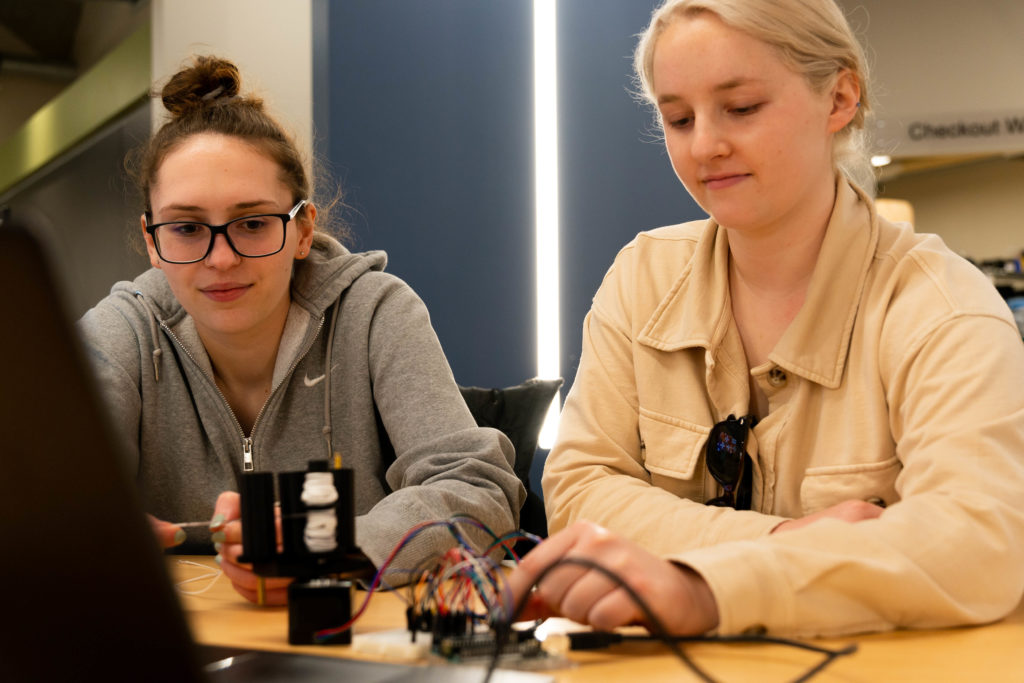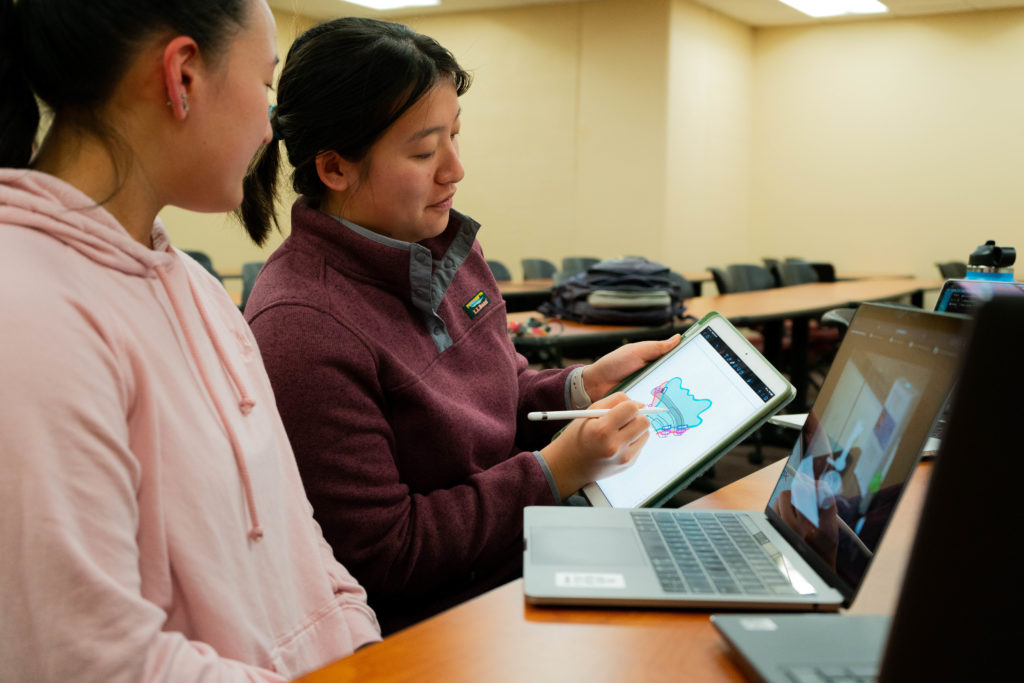Dr. Christopher Luzzio, neurologist and associate professor of mechanical engineering, brings challenges from the clinic into the classroom in BME 601: Design for Rehabilitation.
Many engineering courses teach students how to design, but few classes show students how to put their designs into practice and improve the lives of others. Taught by Dr. Christopher Luzzio, associate professor of mechanical engineering, BME 601: Design for Rehabilitation is unique in exactly this way.
While numerous design courses are offered within the College of Engineering, BME 601 is unique because, Luzzio stresses, “the focus of this class is assistive devices. Period.”
Luzzio is a veteran neurologist at UW Health, who primarily sees patients with disabilities. He regularly works to assess their day-to-day activities and the limitations they may face. Like most physicians, his main priority is to improve his patient’s lives beyond the clinic. But, as an engineer, he constantly considers ways to provide his patients with assistive devices.
“I am a technical thinker. I think in terms of gears and levers,” says Luzzio. “When they come in, I’ll look at their wheelchair and think, ‘I know I can get you a better one than that.’”
Luzzio has been practicing neurology since 1997. After his residency in Madison, he briefly ventured out to San Francisco before returning to Madison to fulfill his passion for working with students. Although he has been mentoring students in many facets since 2003, he officially began teaching BME 601: Design for Rehabilitation in 2014.
He is both a professor of neurology and an associate professor of mechanical engineering, a unique combination that he leverages to provide his patients with assistive devices.
“Having an engineering background gives me a different perspective, it means that I have a mind that’s open to look at problems in a different way, to look at problems from the point of view as ‘Oh, what solutions are there that we’ve not done yet? What type of engineering solutions can be applied to these medical problems?’” Luzzio says.
BME 601: Design for Rehabilitation is an elective engineering course that provides hands-on opportunities to students interested in designing assistive technology. The class of 12 students is divided among five projects, each with a client and specific design goal.
Most of the projects are sourced from Luzzio himself, allowing students to build relationships with the patients they meet throughout the semester and learn more about their needs.
Lily Holden, a master’s student in the Biomedical Innovation, Design, and Entrepreneurship (BIDE) program, is currently working on a device for a patient with multiple sclerosis. Her client has difficulty grasping objects, ranging from medications to writing instruments. Holden’s group is designing a soft hand exoskeleton to meet their client’s various needs.
“BME 601 was recommended to me by another student in the BIDE program,” Holden explains.
“I was drawn to the course because of Dr. Luzzio’s medical background and because I’m interested in the intersection between technical innovation and patient care.”
– Lily Holden

But the projects in the course aren’t limited to just helping improve patients’ day-to-day functioning: students also dedicate themselves to removing barriers that prevent their clients from engaging in their hobbies and interests. Several years ago, for example, Luzzio and his students adapted a baritone for a patient who was passionate about creating music. Since then, numerous adapted musical instruments have come out of the course.
Now, Luzzio has a vision for the class that includes a focus for making musical instruments available to people with disabilities.
He emphasizes, “I want to make music available to people that otherwise couldn’t be musicians, because music is an art form that brings joy to people.”

Regardless of the project focus, Luzzio leverages his background in mechanical engineering to help students push the projects to completion. He meets with each student group to discuss their designs, offer advice, and provide them with resources, all while maintaining the perspective of a clinician. When necessary, Luzzio isn’t afraid to pitch in and work on projects with students late into the evening.
Undoubtedly, it’s his dual passions for teaching and patient care that create the winning formula behind the course’s success.
Luzzio concludes, “the goal of the class is to inspire students by having them work with clients and having that clinical exposure, to design and build something new, and learn some new technique… I want you all to learn something you’ve never done before.”
